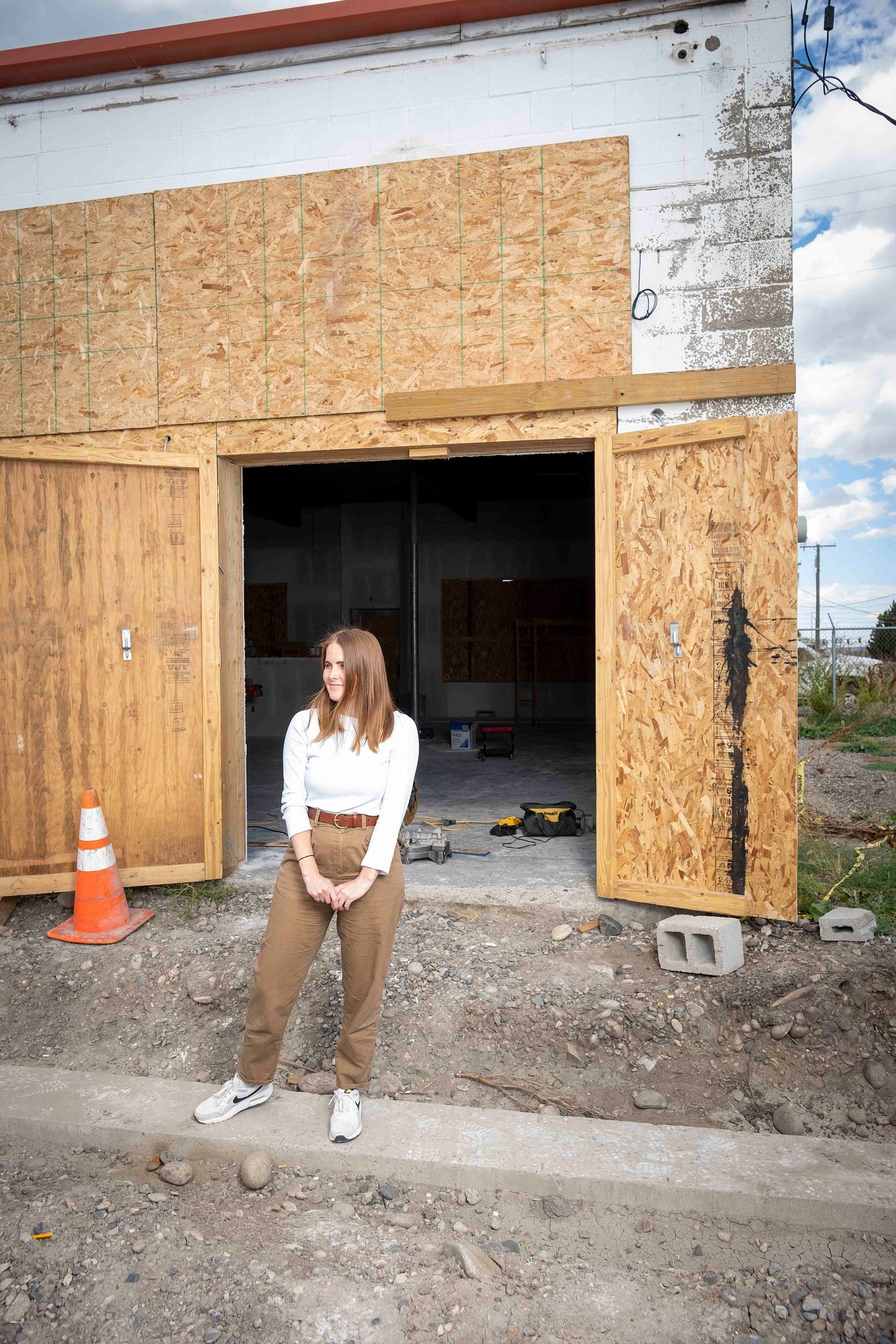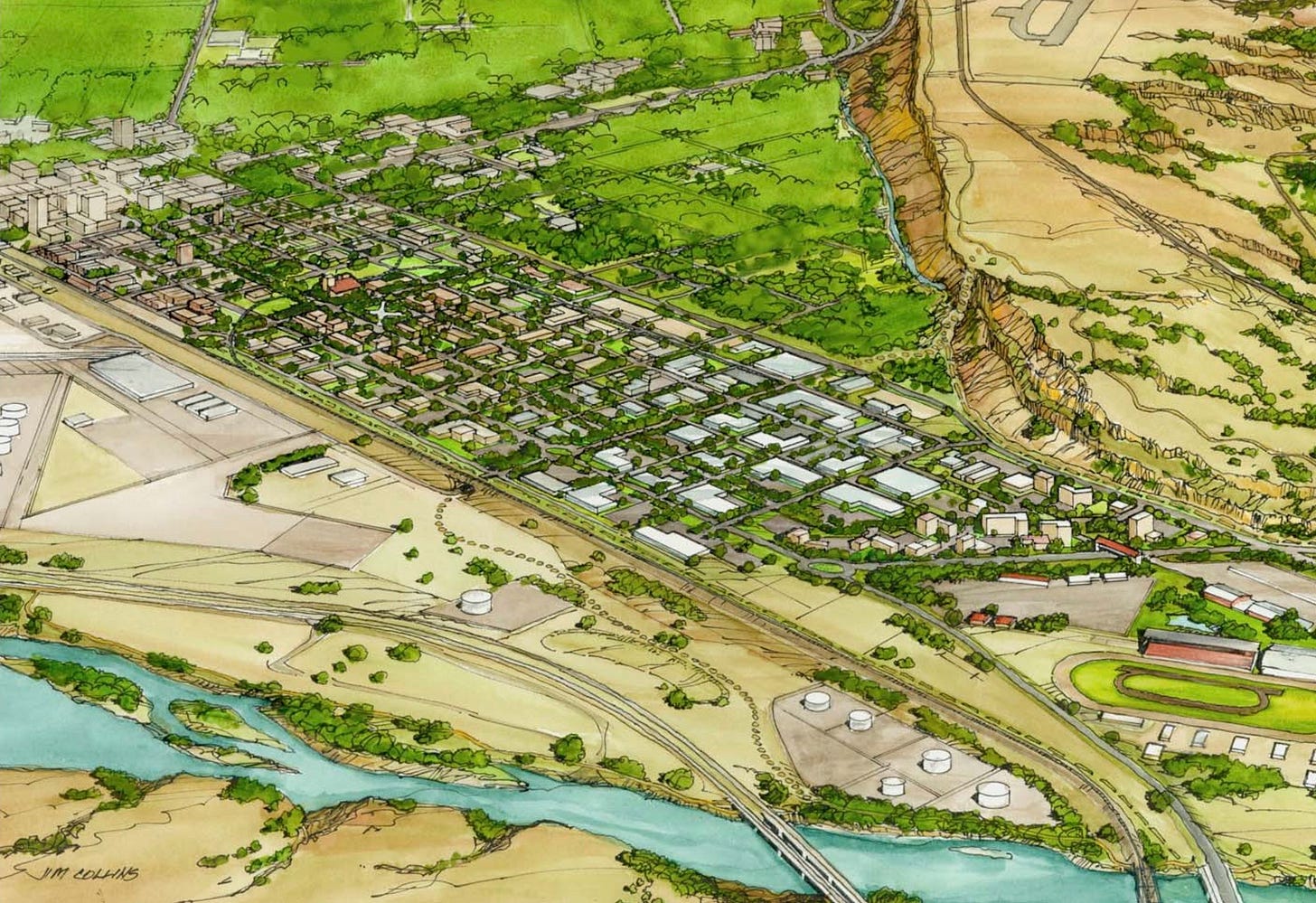The Drip-Drip of Construction + More
This is it. A construction update. A new home for some Toucan fixtures. Michelle Harkins and the EBURD. Other stuff.
One Last Sale of Beautiful Things at 2505
Okay, so this is some straight-up Toucan self-promotion right off the top: We’re having a sale to lighten the load a bit with respect to what we will have to move to the new location when it’s ready. There’s a bunch of art, glasswork, jewelry, stickers, cards, and more, up to 40% off.
We’re closed today through Monday, but then Toucan will be open on Tuesday, Wednesday, and Thursday of next week (September 12, 13, 14) from 10 am to 4 pm for this sale.
And then that’s it. Hard to believe, but these will be the last days that people can experience Toucan at the Montana Avenue location. (We’ll still be finishing up some work and will be available by appointment for clients and customers with any business to attend to and framing to pick up.)
In any case, please come down and look around. There’s a lot of good stuff we’re putting on sale. We’ll see you next week.
Under Construction
Not too much in the way of a construction update (it’s been a bit of a drip-drip process with a deluge promised to come, the bulk of the work happening all at once at the end of the schedule), but here’s a picture, above, of our new building, looking out what will be the main entrance off the parking lot. Big windows above and those electrical boxes won’t be there, just a nice, beautiful, white wall.
The above photo is of the footing that will support a steel structure, both sun shade and defining element, on the other side of that same main entrance we were just looking through. That’s Michelle Harkins, Executive Director of the Billings Industrial Revitalization District, standing on it (more on her in a minute).
Above is a rendering of what that structure will look like. For lack of a better expression, it’s going to be very cool.
Art’s Paper & Paint
As many of you know, but likely not all of you know, our building at 2505 Montana Avenue once sheltered McIntosh Art Co., an art supply and picture framing business founded by Bill McIntosh in the 1970s. When Bill passed away, his sister, Sally, moved back to Billings and moved McIntosh Art Co. from Grand Avenue, where it had been relocated, back to Montana Avenue, to the building right next door to its original location, the location which had become Toucan after Bill left. McIntosh Art Co. and Toucan then existed as conjoined and symbiotic neighbors for many years hence.
All this is to say that it seems fitting that since Toucan is so closely associated with an art supply business, was birthed in an art supply business, that some of the furniture and fixtures—including this flat file pictured above—that we are shedding to prepare for our move would go to, well, an art supply business.
Art’s Paper & Paint is located at 1500 Broadwater Avenue, and we’re lucky that someone like Sara Creeden, its founder and owner, would be willing to take on the risk of entrepreneurship to rescue Billings from an art supply drought that had artists crawling through a big-box desert or sucking for sustenance at a soulless online tube.
Please visit Sara and her essential venture. We need a place like this in Billings, and it will take nothing more than the simple monetary exchange for value that powers our consumer economy to ensure its continued ability to sustain our artmaking needs (or, much more simply: buy stuff there!).
We are like islands in the sea, separate on the surface but connected in the deep.
―William James
Toucan, the EBURD, and Michelle Harkins
Even if art can be otherworldly, Toucan exists as a terrestrial construct meant to bring it down to earth, providing a place where the earthbound can access it. Take a step back, and we can see that the East Billings Urban Renewal District (EBURD), where Toucan is moving, is a larger construct conceived and organized to contain something like the Toucan construct. This, then, exists within the yet larger construct that contains the EBURD, this city we know as Billings.
And so on. All of these conceived and constructed entities meant to provide some measure of civilization to our human proceedings. But let’s take an even bigger step back so as to gain the ultimate perspective, to take in the view of Babylon, no less, that earliest stand of urbanity on the Euphrates River in southern Mesopotamia that marks the beginning of human civilization some 6000 years ago. What do you see?
Here’s what I see: not just the construct, the thing that it is, but the endeavor of humans to do nothing more than try to figure out how to live together in some kind of organized way. From the beginning until now, this is what we do. It’s all we’ve ever done. Whatever the thing, it is only a byproduct of the process of our shared humanity. The city, the building, the bomb, the Barbie doll, the rules and regulations, the paintings and the pottery: they exist only as the results of our human struggle to be together here on Earth.
This is why what I want you to know about the EBURD is not so much the construct that it is—a Master Plan, a Zoning Code, a Tax Increment Financing District, the organized public infrastructure of pipes and asphalt—but the human with whom it is most closely associated. Michelle Harkins is the Executive Director of Billings Industrial Revitalization District, the organization founded by and with which the City of Billings has contracted to oversee the EBURD’s TIF and development.
And while many people were involved in the creation of this development district over the years, it is, in fact, Michelle, who has become its bellwether today. This person who, when we sat down at Toucan not long ago, in two chairs that Allison and I had recently purchased for the new Toucan—under a giant painting by Arin Waddell of another chair, this one with some cherries whimsically scattered on and underneath it—told me the story of why she does what she does.
Michelle was born and raised outside of Pittsburgh, met her husband in Nashville, both of them rock climbers, of all things, both of them who succumbed to the call of adventure in the West, both of them with visions well beyond bouldering, wanting to ice climb, of all things, which is how Michelle found herself crampon-footed, dangling from an ice axe in Hyalite Canyon.
“So we moved to Bozeman, stayed there for a year, and fell in love with Montana,” Michelle explained.
Graduate school in Missoula followed, law for him, accounting for her, and eventually jobs at Crowley Fleck and Eide Bailly, respectively. They decided to start a family and, wanting a little more control over her time, Michelle decided to swerve into the corporate lane, with more regular hours and more manageable expectations.
“It got to the point where I was comfortable doing that and with everything it had to offer.” She and her husband had twins and, essentially, everything was fine, the way a life expands to accommodate everything in it, necessarily and without compromise, because what are you going to do? Montana. Work. Twins. Ice climbing. Buy the T-shirt. Life is good.
But this is where this typical story of human achievement in America takes a turn toward something more noble, and why it turns out that a particular neighborhood in Pittsburgh, Pennsylvania, plays a role in the future of Billings, Montana.
You see, in 1968, a man named Fred Rogers walked into a television studio at WQED in Pittsburgh, put on a cardigan sweater, and, for the next 33 years, taught us how to be better people. His show was for children, of course, but his example was for everyone. And Mister Rogers’ Neighborhood became our neighborhood, one that we all could live in, thanks to the unifying magic of television (back when television had that kind of magic). And while Mr. Rogers is important to Michelle like he’s important to many of us, this was particularly so for someone from Pittsburgh. Because this national hero for most was a hometown hero for a person from Pittsburgh, his stories and guidance resonating all that much more with a certain protective pride.
When sharing the stories of Mr. Rogers with her children, one in particular inspired a poignant question. Mr. Rogers often reminisced about being confronted with scary things on the news as a child, and he famously told the story of how his mother would tell him to “look for the helpers” and to take comfort in knowing that there are always people in any situation who are trying to help make things better.
Well, so it was that in response to this advice, Michelle’s two-year-old son did what most any child would do—perceptive and curious, but mostly unyielding and direct—when he asked: “Mommy, are you a helper?”
It’s probably a cliché to say that with this innocent inquiry from a beloved child a person’s life was changed forever, but clichés are clichés because they are true, and if that’s how it happened, well, that’s how it happened. Michelle has worked in the world of nonprofits, by definition working for the public benefit, ever since.
When Allison and I decided it was time to reinvigorate our business for the next run of our lives, a decision that introduced a certain kind of controlled chaos to our life’s standing, we looked for helpers. And when we decided that moving east was going to be the essence of our urban innovation, like homesteading in the wrong direction, pushing against the land rush to the west that has defined Billings for decades, that’s where we found Michelle, someone helping to guide our hometown in the very direction we wanted to go.
When we were talking the other day, Michelle had left her shoes on the floor and tucked her feet up underneath her in the confident, knowing, comfortable pose of someone who had found her calling and wasn’t going to deny it. Her eyes were winsome, but I knew not to be fooled, for they were fired with vigilance, fit to stare down a particular future for Billings and dare it not to come to fruition.
This is the kind of person we want to be part of the community of Toucan, and why we want Toucan to be part of the community of which Michelle is its guiding light. Because the construct is nothing but lines on paper, rules and regulations, roads on Earth. It’s the humans who make the metaphorical machine more than a box of cogs. And when these humans become more than human, when they transcend their mere humanness to become a person, a personality, a Michelle Harkins, of all things, that’s when we can believe that this whole experiment to live and work together that we call Billings just might work.
Oh, and look for the helpers.
I believe that the community—in the fullest sense: a place and all its creatures—is the smallest unit of health and that to speak of the health of an isolated individual is a contradiction in terms.
—Wendell Berry
Only the Night Knows
Allison and I won’t be able to attend The Night this year, the Yellowstone Art Museum’s signature fundraising event, but we did frame this Ben Pease piece, seen in the background above, for the occasion. We’re down to the last minute now—going once, going twice—but tickets are still available through the YAM website. We’ll expect a full report.
Cherry Chair Makes a Run For It
Oh, and Arin’s Cherry Chair painting, mentioned above, was sold this week and has left the building, making its escape in an RV (it’s very big).
And One Last Thing
Check out some lamps and paintings by Montana-born artist and filmmaker, David Lynch, on his page at Pace Gallery.
















Mark- Thanks for sharing Toucan’s EBURD. Interesting how every place has their own acronym of the latest planning long-range plans. Hope all’s well-